What is Automated QA Testing? - All You Need to Know
Software is becoming more and more complex while consumer demand grows ever higher. Developers are under increasing pressure to deliver new apps and updates rapidly – but thorough testing is still necessary to detect bugs and ensure software quality. It's not surprising, then, that many organizations use automated testing to speed up workflows and maximize the efficiency of the quality assurance (QA) process.
While manual testing will always be necessary, automation can help businesses save time and money. Here, we'll explore:
- What is automated QA testing
- How to use it
- Differences between manual and automation testing
- What types of testing can you automate
- How it can benefit your company.
Want to drive your global growth in local markets?
We can help you drive global growth, better accessibility and better product quality at every level.
QA vs. Automation vs. QA automation
Some terms in software testing can sound confusing. Although they sound similar, they refer to different things. So, let's start with the basics:
Quality Assurance (QA)
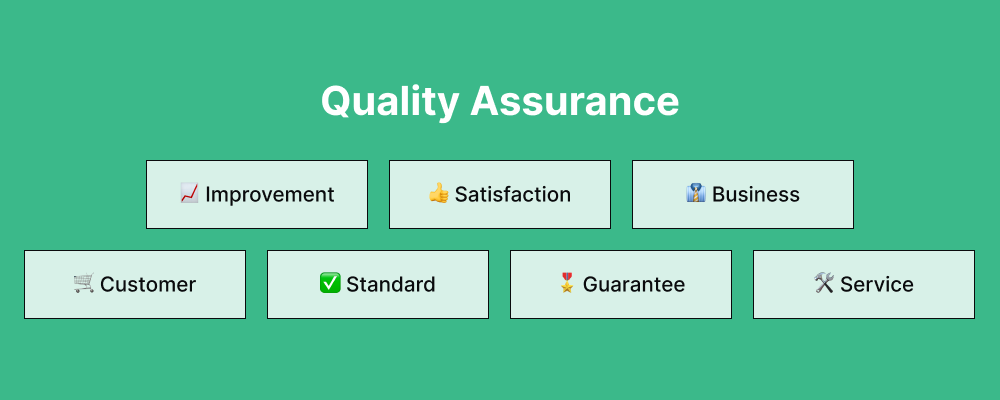
Quality Assurance (QA) is a systematic process that ensures a product or service meets specified quality standards. In software development, QA involves activities and methods that focus on preventing defects and ensuring that the final product meets stakeholders' expectations.
Key components
- Testing: The process of systematically evaluating software to identify any gaps, errors, or missing requirements.
- Process improvement: Implementing measures to enhance the development and testing processes continually.
- Quality standards: Establishing and adhering to defined quality standards and best practices.
- Purpose: QA aims to deliver high-quality products by implementing processes and standards that prevent defects rather than merely detecting them.
Automation
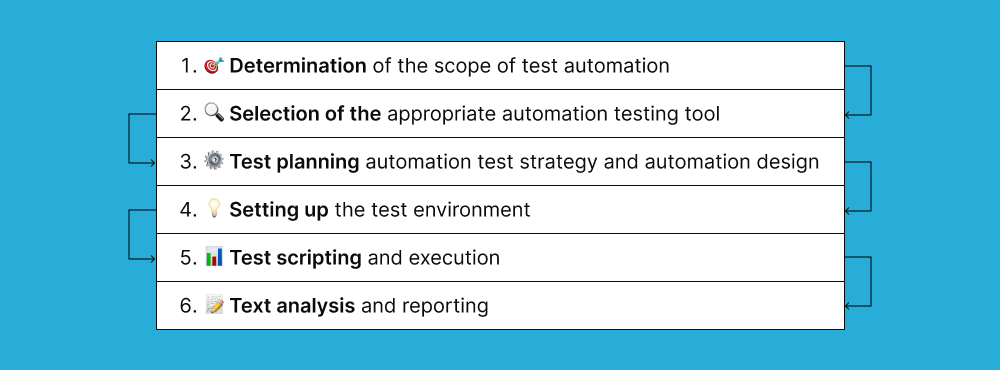
Automation refers to using technology and software to perform tasks or processes without human intervention. For instance, using email automation tools like ActiveCampaign or ClickFunnels can streamline the process of sending targeted emails, tracking engagement, and analyzing campaign effectiveness. In the context of software testing, test automation refers to using automated tools and scripts to execute test cases, compare actual outcomes to expected outcomes, and report results.
Key Components
- Automated testing tools: Software tools designed to automate the execution of test cases.
- Test scripts: Instructions written in a programming language to perform specific actions and verify outcomes.
- Continuous integration/Continuous deployment (CI/CD): Integrating automated testing into the development pipeline for rapid and continuous delivery.
- Purpose: Automation in software testing aims to improve efficiency, reduce time and costs, and increase test coverage by automating repetitive and time-consuming testing tasks.
QA Automation
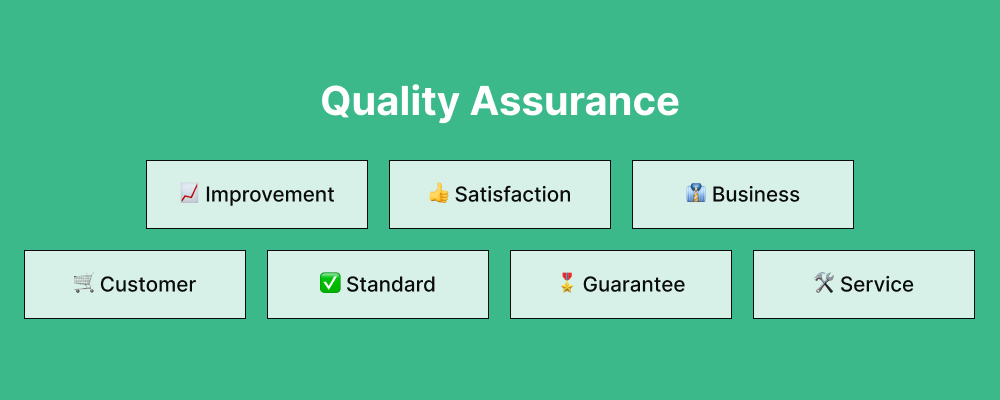
QA Automation, or Test Automation, integrates automation tools and processes into the overall Quality Assurance strategy. It involves using automated testing tools and frameworks to enhance the efficiency and effectiveness of the testing process.
Key components
- QA processes: Standard QA processes incorporating automated testing.
- Automated testing tools: Tools specifically designed for executing automated tests.
- Collaboration: Integration of automated testing into the broader QA strategy and development lifecycle.
- Purpose: QA Automation combines the principles of quality assurance with the efficiency gains of test automation. It seeks to ensure that QA processes are enhanced by using automated testing tools, ultimately contributing to delivering high-quality software.
QA vs Automation
QA is a broader discipline encompassing processes, standards, and activities to ensure overall product quality.
Automation refers explicitly to using technology to perform tasks without human intervention and, in testing, focuses on automated test execution.
Automation vs QA Automation
While QA focuses on overall quality processes, automation emphasizes using technology to perform tasks efficiently. QA Automation strategically combines both, integrating automated testing into the broader QA framework to enhance software quality.
Podcast for product managers
We've produced a podcast all about global product growth. Listen to an episode below.
How to incorporate automating QA into your workflow?
QA automation involves utilizing dedicated software to execute tests on the software under development. While human testers previously shouldered many testing responsibilities, leveraging technology to mitigate repetition, automated testing now handles various tasks. It even conducts advanced tests that manual methods cannot achieve.
Incorporating QA automation into your workflow can take several forms:
1. In-house development team
Here, your internal development team creates tests from the ground up, tailoring them to your software's specific requirements and intricacies.
2. Codeless test automation tools
Tools designed for codeless test automation become invaluable in environments where coding expertise is limited. These tools enable non-coders to create and execute tests efficiently.
3. Third-party QA service
Engaging with a third-party QA service, like Global App Testing, allows specialists to develop and implement tests for your application. This approach is beneficial when seeking external expertise or resources.
Automated testing becomes an integral component in a continuous integration environment, where software undergoes development, testing, and deployment multiple times daily. This methodology ensures that serious bugs, security vulnerabilities, and user experience issues, including those specific to particular use cases, are promptly identified through rigorous software testing.
Automated testing becomes an integral component in a continuous integration environment, where software undergoes development, testing, and deployment multiple times daily. This methodology ensures that serious bugs, security vulnerabilities, and user experience issues, including those specific to particular use cases, are promptly identified through rigorous software testing.
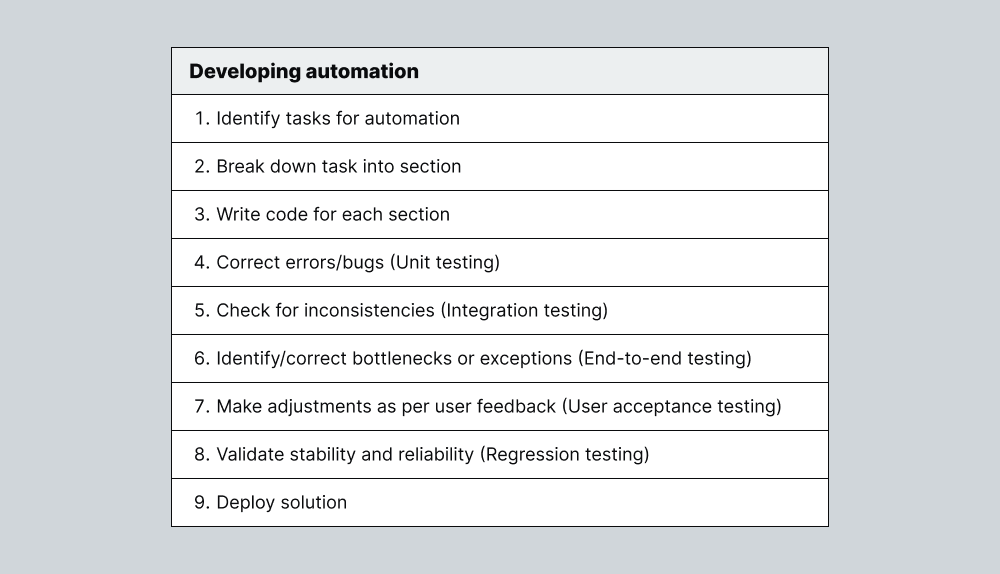
Automated QA testing vs. Manual testing
Automated QA testing relies entirely on specialized tools for executing test cases and generating results. In contrast, manual testers follow a written test plan and report defects to developers. While these two methods can be used concurrently, each excels in specific areas.
Manual testing
Manual testing is ideal for evaluating the user experience (UX) and an application's overall look and feel – tasks best performed by a human. It is commonly employed for newly designed test cases and, on an ad-hoc basis, for cases with changeable requirements.
Automated testing
Automated testing operates on frameworks developed by testers and is well-suited for large-scale software testing. Generally more accurate than manual testing, automated testing offers a significant advantage in saving time, particularly in scenarios like regression testing that can be laborious for manual testers.
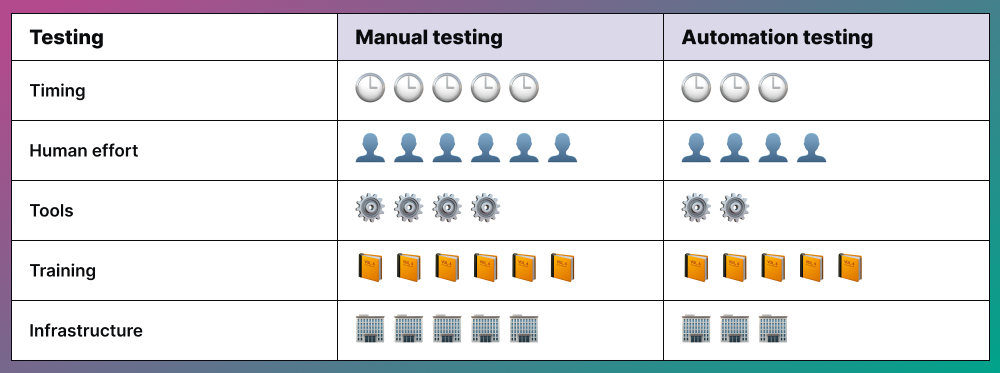
Key differences
Recording process- Manual testing: The manual testing process cannot be recorded.
- Automated testing: Automation test scripts are reusable, contributing to efficiency in repeated execution testing and successive development cycles.
Suitability - Manual testing: Ideally suited for assessing UX and cases with changeable requirements.
- Automated testing: Particularly effective for large-scale software testing where accuracy and efficiency are paramount.
Time efficiency - Manual testing: Relies on human effort and can be time-consuming, especially for repetitive tasks.
- Automated testing: Offers time-saving benefits, crucial for tasks like regression testing.
Availability - Manual testing: Involves manual input and cannot be conducted 24/7.
Automated testing: Allows for continuous 24/7 testing without the need for manual intervention.
How does QA automated testing work?
While testing can be automated, creating the script for the test still needs some understanding of programming. Usually, the development team writes the code for the QA team. But now, with codeless testing software, teams can create tests using simple keywords, making it easier for everyone.
Automated QA testing has two main parts:
GUI (Graphical User Interface) testing
This type of testing imitates how users interact with the software, like clicking buttons and typing. It checks if the application works as intended and notes any issues. Automation makes this process faster and avoids mistakes made by people.
API Testing
API testing checks the behind-the-scenes part of the software. It looks at how the different parts of the software communicate. This includes checking how fast the software responds, its format, how it handles special cases, and how it reacts to security issues.
Using automated QA testing makes testing quicker and less prone to mistakes. Splitting it into GUI and API testing helps ensure both the visible part of the software and the hidden parts work well together, creating reliable and error-free software.

Automated QA testing process
The automation testing process involves several stages to ensure a smooth and effective testing lifecycle:
1. Define the scope of automation
Begin by understanding the objectives of the testing process and conducting a feasibility analysis. Determine which tests can benefit from automation and which ones demand manual involvement. Consider budget constraints, available personnel, and the expertise required for seamless execution.
2. Compose a strategy
The QA team developed a test plan outlining the project's approach and end goals to ensure a successful project outcome. They should choose a suitable framework for the test cases, including common practices, testing tools, and standards. Some typical test automation frameworks are data-driven, keyword-driven, linear scripting, and modular testing.
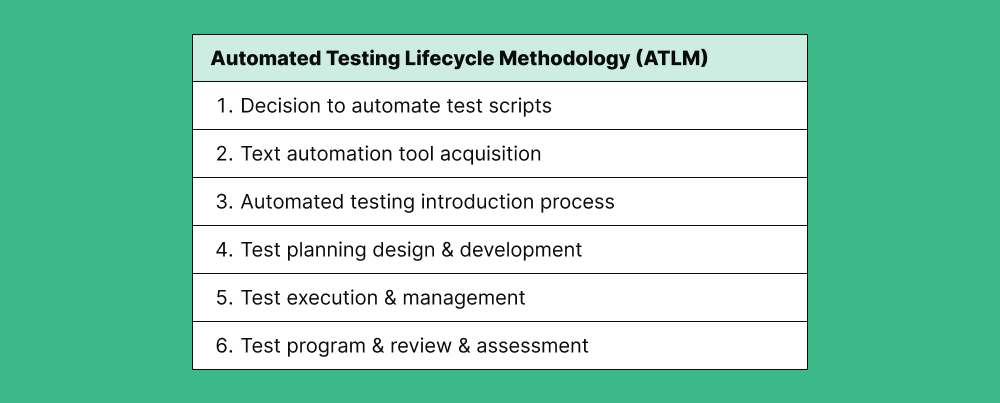
3. Write a script
During this phase, quality assurance engineers will develop scripts to conduct tests following the requirements and coding standards. It is important that these scripts are structured and reusable and a third party can easily understand them.
Several open-source tools, such as Selenium WebDriver, Appium, and Android Monitor, can create automated test scripts and test web applications on multiple browsers using various programming languages like Java and Python.
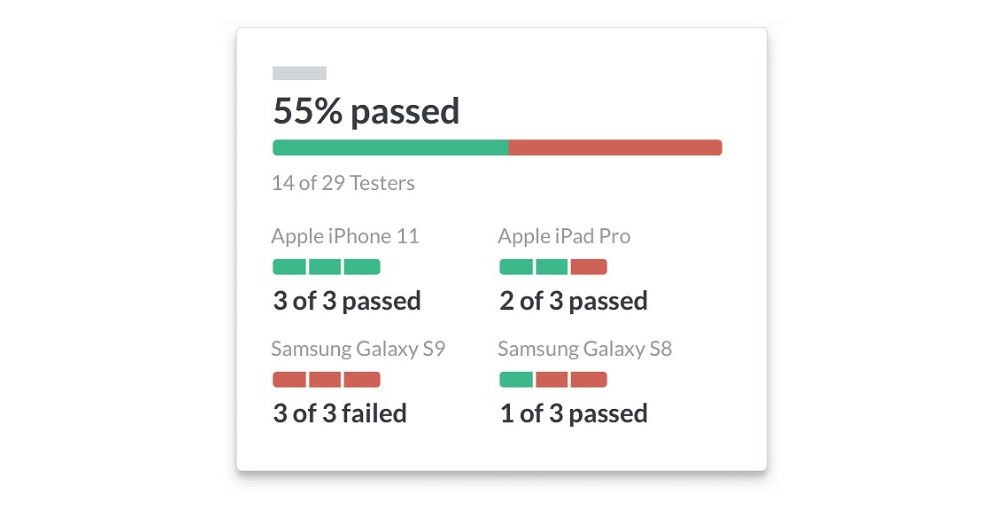
4. Execute the tests
Run automation scripts in this stage. Scripts need test input before execution. Once run, they generate detailed test results. The automation tool can be launched through the test management tool or used directly. After execution, create a detailed report for future reference.
5. Analyze and report
Once the tests have been executed, the automated tool will generate a report. The results will show which components contain bugs or defects and whether or not additional testing is required.
Types of software tests that can be automated
The tests your software needs depend on its type and how it's developed. Suppose it's a cloud app with continuous updates. In that case, you might need more advanced tests than internal software built using the traditional waterfall approach. Some standard tests include:
1. Unit tests
Unit tests involve testing individual components (or units) of an application to ensure that each one performs as expected. Often designed by the same programmers who wrote the code for the unit, they are one of the easiest QA tests to automate.
Unit testing makes bug-spotting easier, as it's specific enough to pinpoint an issue. Debugging is simple, too, as only the latest changes need to be fixed when a test fails. Defects are usually fixed as soon as they're found.
2. Integration tests
Integration tests handle multiple components at once to see how the software works as a whole, or how it performs with hardware. For example, it could check whether an ecommerce app sends a confirmation email when a customer makes a purchase.
Integration testing concentrates mainly on the interfaces and information flow between the modules rather than the unit functions that have already been tested.
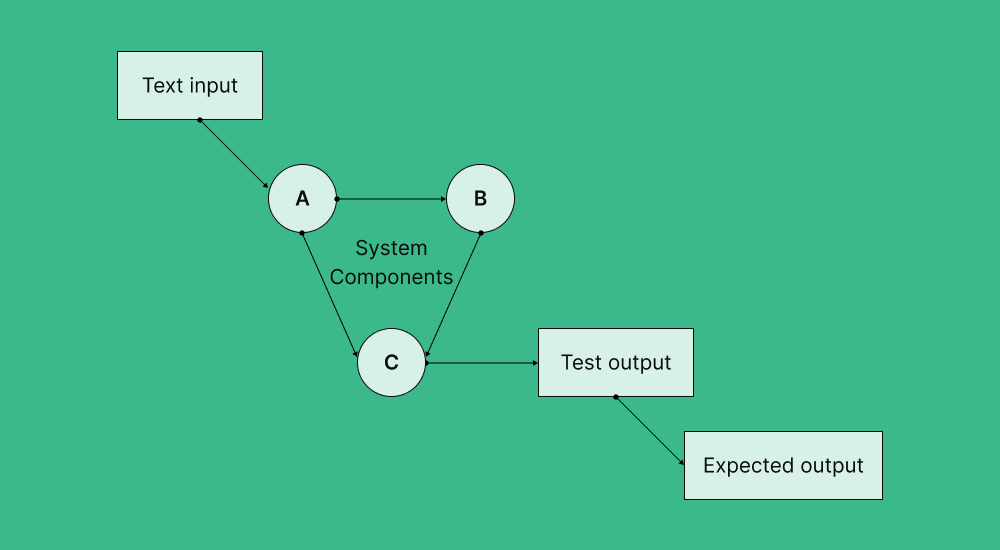
3. Functional tests
Functional tests check that the software can perform a set of functions as determined by the requirement documentation. Manual testers or automated tools provide suitable input and ensure the output is as expected.
Functional testing uses black-box testing techniques, in which the tester does not know the underlying code.
4. Smoke tests
Smoke testing is a further assessment testers use to see if the software's main functions work correctly. It's also known as build verification testing, as it checks the stability of the software build. Developers can fix any issues there and then before proceeding with the next stage of testing.
5. End-to-end tests
This more comprehensive test checks the entire software product from beginning to end. It ensures that all the integrated pieces run as intended. It aims to replicate real user scenarios and focuses on aspects of the system that cannot be reliably evaluated with smaller tests.
6. Performance tests
Performance testing is a series of non-functional tests used for checking the software's speed, stability, and reliability under a particular workload – such as the number of people using the app at any one time. The aim is to ensure the software satisfies performance requirements and to identify and fix performance-related bottlenecks.
7. Regression tests
Regression tests are used to confirm that a recent change to the program or code has not adversely affected the app's existing features. It means re-running functional and non-functional tests as a final check before releasing the product.
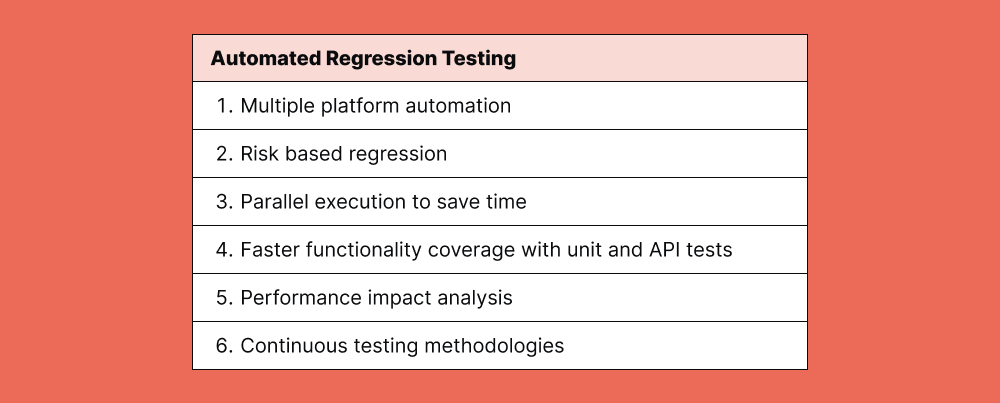
Benefits of QA Automation
Let's begin by examining some of the business benefits that come with the adoption of QA automation:
Reduces testing time and cost
Continuous releases demand frequent testing, and manual testing can slow down the process. QA automation allows the swift execution of test scripts across various configurations, reducing both testing time and costs.
Improves product quality
Automation enhances testing coverage, enabling the execution of thousands of test cases simultaneously on multiple platforms. It delves deep into applications, checking memory data, data tables, and internal structures, thereby enhancing the overall quality and performance of the software.
Better resource utilization
QA team members can focus on advanced testing tasks, as automation seamlessly handles functional and regression test cases. This reduces the reliance on a large QA team and minimizes the time and cost of hiring and training software testers.
Suited for CI/CD and DevOps
Automation facilitates the transition to Continuous Improvement and delivery (CI/CD) mode, providing continuous testing crucial for DevOps practices.
Challenges of QA automation
Even if QA automation appears to be a straightforward fix, it’s not that simple. Coded test automation introduces as many challenges as it resolves, mainly due to the extensive coding required to implement QA automation effectively.
Human dependency
Test automation tools cannot replace human testers. Skilled human resources with advanced programming skills and testing tool knowledge are essential for effective automation.
Initial setup costs
Designing and configuring an automated test framework can be challenging, with high initial setup costs and ongoing maintenance requirements. Skilled testing professionals are crucial for this phase.
Selecting the right tool
The abundance of automated testing tools makes it difficult to choose the right one. Each tool may not be adaptable to your specific applications or software architecture.
Inefficient team collaboration
Effective collaboration among software testers, developers, business analysts, and project managers is vital for optimal results. Poor team collaboration can lead to delays in both development and testing efforts.
The rewards of automation
Automated testing is a valuable resource, saving your company both time and money.
This efficiency also allows the QA team to engage in more sophisticated testing practices, expanding test coverage and ultimately delivering superior quality products.
However, automation is not a cure-all. While it streamlines many processes, manual testing retains its importance, and some level of it will always be necessary.
For optimal results, consider using a combination of automated and manual testing. This comprehensive approach enhances your ability to detect various bugs and defects. Collaborating with experts, such as Global App Testing, can assist you in seamlessly integrating these two methods for maximum effectiveness.
Visit the website to explore further and engage with a knowledgeable representative.
FAQ
Why is Automated QA Testing important?
Automated QA Testing is crucial for its efficiency in executing repetitive tests, ensuring faster feedback, reducing testing time, and improving accuracy. It allows for the early detection of defects, ultimately leading to higher-quality software.
What types of tests can be automated?
Various tests can be automated, including functional, regression, performance, and integration tests. Automated testing is particularly beneficial for repetitive tasks and scenarios with many test cases.
What types of applications are suitable for Automated QA Testing?
Automated QA Testing suits various web, mobile, and desktop applications. It can be adapted to different software development methodologies and project requirements.
Keep learning
How to write a good test summary report
5 Agile testing tools to improve your development in 2025
How Flip cut their regression test duration by 1.5 weeks

